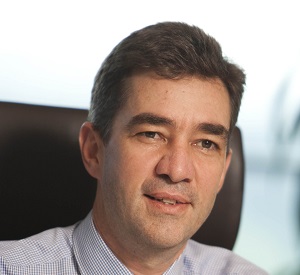Increased 4G-LTE investment key to Africa's journey to 5G
Increased 4G-LTE investment key to Africa's journey to 5G

As the ICT industry worldwide takes steps to advance the evolution of networks, including recently approving the Non-Standalone 5G New Radio (NR) that will enable early 5G deployments, one expert recommends greater investment in 4G-LTE across Africa in order for the continent to benefit from 5G.
James Munn, Vice President for Sub-Saharan Africa at Qualcomm believes that while Africa has done well to leapfrog stages of technological development in the past, the continent needs to bolster investment in 4G-LTE in order to be ready for the next mobile wireless standard.
"Africa has a way of growing leaps and bounds, as we have seen in the past where we jumped straight to a second or a third revision and we skipped the first one, which the developed markets will have gone through. We do hop quite successfully, but it is definitely clear that in order for 5G to work in Africa, we have to have a solid 4G network as a solid foundation because one does not replace the other. They are completely complementary to each other. We have to get 4G right and we are on the right track."
Munn says a concerted effort to ensure improved 4G-LTE connectivity is already underway between African regulators, operators and other industry players.
For example the freeing of spectrum in the 800MHz frequency band (B20) on the back of the rollout of digital terrestrial television migration in Africa will play a key role is providing 4G with a much need coverage band, something currently missing in many Africa markets.
He says the progress over the last few years in the allocation, channelling and auction of 4G LTE spectrum is encouraging as it shows that mobile is increasingly being understood to be an economic driver with a direct impact on GDP.
"5G will only really start to pick up pace in 2019 or 2020 globally and more business cases will develop showing different ways for use of the technology as we start to connect the internet of everything. In order for us to benefit in the African context, we have to have a good baseline in terms of 4G. The markets have to have coverage and capacity in place and a robust network that can provide speed and efficiency, which is the direction we are going in now. Once that is in place 5G overlays extremely well because it will need something to fall back on."
Low-cost 4G devices
Munn also reveals that a low-cost 4G devices that manufactures have developed for India in partnership with Qualcomm will soon be made available in Africa.
He says the phone will likely cost R400 or less and support 2G, 3G and 4G. The device is powered by Qualcomm's SnapDragon 205 chip and has a camera, dual SIM, Facebook, Whatsapp, GPS as well as access to MiFi and the internet.
"It will all depend on how the operator who buys it specs it, but the whole idea is to have a device that you can (use to) replace 2G devices being sold, giving the customer a better experience that is also affordable. In 2G they couldn't have Whatsapp or it couldn't work very well, now you are giving them a device that is similarly priced but it can do all these things. For the operator they can start to release the 2G spectrum and refarm it to 4G once more of these devices are made available."
Ericsson's 2017 mobility report released last month predicts that there will be more than half a billion 5G subscriptions around the world in 2022.
The report also anticipates that there will be eleven times more mobile data traffic in Central and Eastern Europe and Middle East and Africa (CEMA) in the same year.
The growth of mobile broadband subscriptions in Middle East and Africa is expected to tripple between 2016 and 2022.